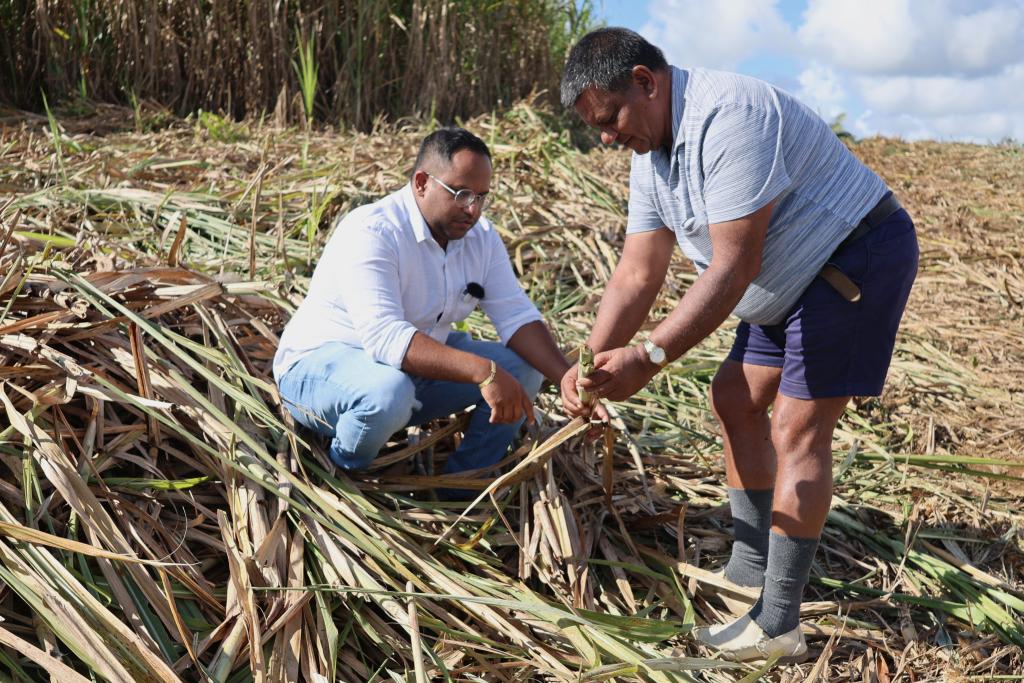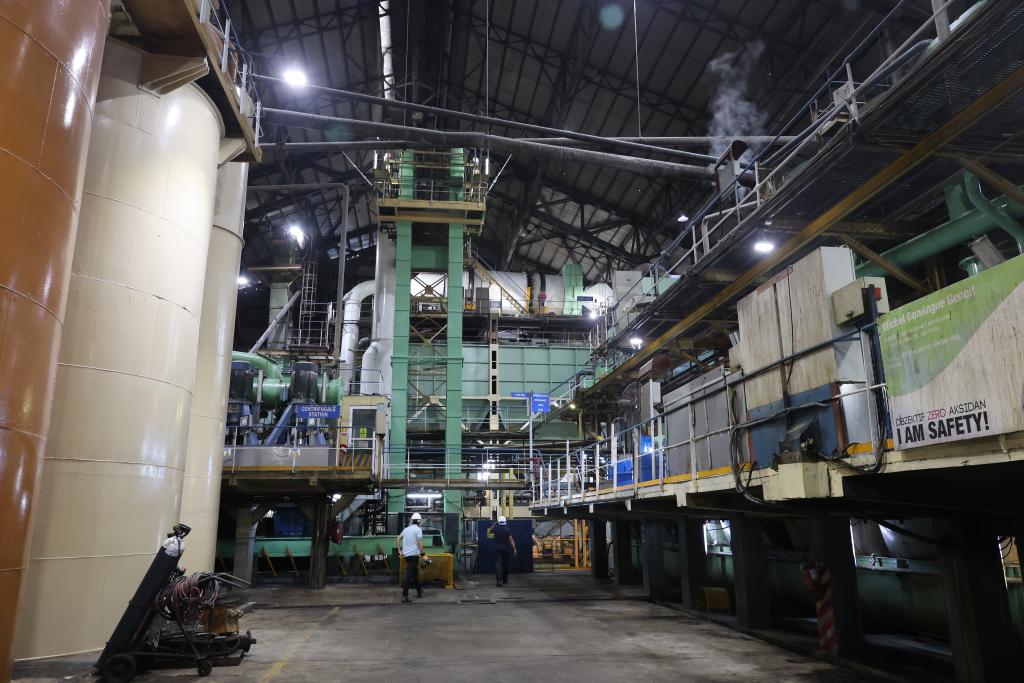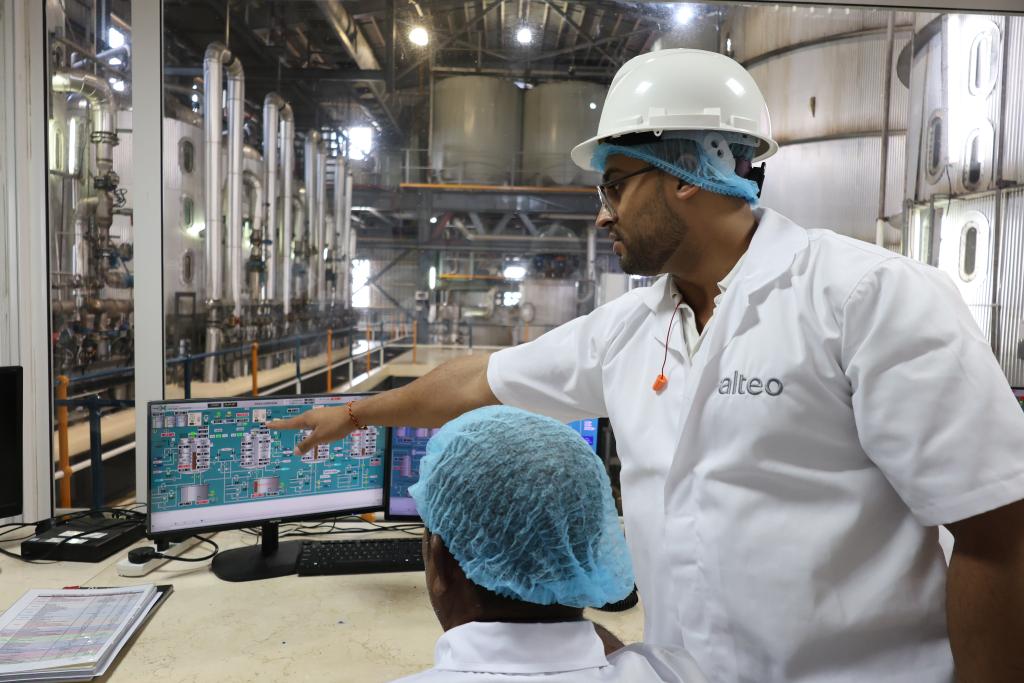Port Louis, August 14th (Xinhua) – When African sugarcane meets China
Thanks to the works of American writer Mark Twain, Mauritius is widely known as the “land of paradise”, but little is known about its nickname – “Sweet Island”.
The name ‘Sweet Island’ comes from the most important crop on the island – sugarcane. At the beginning of independence in the 1960s, 90% of Mauritius’ arable land was used for sugarcane cultivation, and the sugar industry once created nearly one-third of the country’s gross domestic product and over 90% of its total exports.
 On July 24th, in the Frak district of eastern Mauritius, Gonis Bruth (left) and his father were working in their sugarcane fields. Photo by Xinhua News Agency reporter Ling Xin
On July 24th, in the Frak district of eastern Mauritius, Gonis Bruth (left) and his father were working in their sugarcane fields. Photo by Xinhua News Agency reporter Ling Xin
For decades, the Mauritian government has implemented economic diversification policies, and the tertiary industries such as finance and tourism have developed rapidly. But to this day, the sugar industry still plays an important role in the local economy and social development. Dewesh Dukila, CEO of the Mauritius Sugar Confederation, stated that with the addition of by-products such as bagasse and molasses in the sugar production process, the sugar industry still contributes over 2% to the country’s gross domestic product. At the same time, the sugar industry also employs a large number of people, including over 8000 sugarcane growers and a large number of personnel engaged in sugarcane harvesting, processing, and transportation. Maintaining the sustainable development of the sugar industry is crucial for Mauritius
However, since the beginning of this century, the sugar industry in Mauritius has faced severe challenges. On the one hand, the competitive disadvantage of Mauritius’ sugar industry is gradually becoming more prominent due to its small scale and high labor costs; On the other hand, the main market for Mauritian sugar, the EU’s sugar import quota agreement for Mauritius, has expired, resulting in a serious decline in Mauritian sugar exports.
 On July 26th, workers were working in the workshop of a sugar factory in the Frak district of eastern Mauritius. Photo by Xinhua News Agency reporter Ling Xin
On July 26th, workers were working in the workshop of a sugar factory in the Frak district of eastern Mauritius. Photo by Xinhua News Agency reporter Ling Xin
Gunnis Bruce’s family has been engaged in sugarcane cultivation for generations, and by the time he is the fourth generation, they have nearly 200 hectares of sugarcane land. But he complained that “Mauritius is located in a remote area with high international freight costs. With the rise in freight prices in recent years, the sugar industry’s exports have become even more difficult.” “The surrounding sugarcane farmers would rather have their land abandoned than continue to grow sugarcane.
Just as exports to the European Union were blocked, Mauritius’ sugar met China. On January 1, 2021, as the first free trade agreement signed between China and African countries, the China Mauritius Free Trade Agreement officially came into effect. This agreement covers trade in goods, trade in services, investment, economic cooperation, and other related areas. In the field of goods trade, the proportion of products with zero tariffs achieved by China and Mauritius reached 96.3% and 94.2% respectively; In the field of trade in services, both sides have committed to opening up more than 100 sub sectors.
The China Mauritius Free Trade Agreement specifically provides for a “tariff quota” arrangement for Mauritius’ sugar: starting from a quota of 15000 tons in 2021, increasing by 5000 tons annually until reaching 50000 tons by 2028. Within this quota, the tariff on raw sugar will be reduced from 50% to 15%.
 On July 24th, at a sugar factory in the Frak district of eastern Mauritius, workers monitored the production of sugar in the workshop. Photo by Xinhua News Agency reporter Ling Xin
On July 24th, at a sugar factory in the Frak district of eastern Mauritius, workers monitored the production of sugar in the workshop. Photo by Xinhua News Agency reporter Ling Xin
Dukila said, “This arrangement is of great significance for the export of Mauritius’ sugar industry. Previously, our first export of specialty sugar to China was in 2010. However, until 2020, the export of specialty sugar from Mauritius to China was only maintained between 700 and 1100 tons.” Now, with the China Mauritius Free Trade Agreement, one-fifth of Mauritius’ sugar exports are guaranteed.
Dukila emphasized that under the framework of the China Mauritius Free Trade Agreement, Mauritius’ export of specialty sugars to the Chinese market is not a substitute for China’s self-produced sugar, but a supplement. In the long run, the marketing focus for the Chinese market will be on the higher value-added specialty sugar segment market.
When evaluating the characteristics of sugarcane in Mauritius, Bruce said, “As a small island, our sugarcane production area is very small. In order to stand out in the international market, we must pay attention to the quality of sucrose. Most of the sugar we produce is specialty sugar, which is unique in the world
In 2023, at the China International Food and Catering Expo held in Changsha, Mauritius specialty sugar has already had an independent booth. Dukila said confidently, “We are moving in the right direction, and the contribution of the Chinese market is enormous
